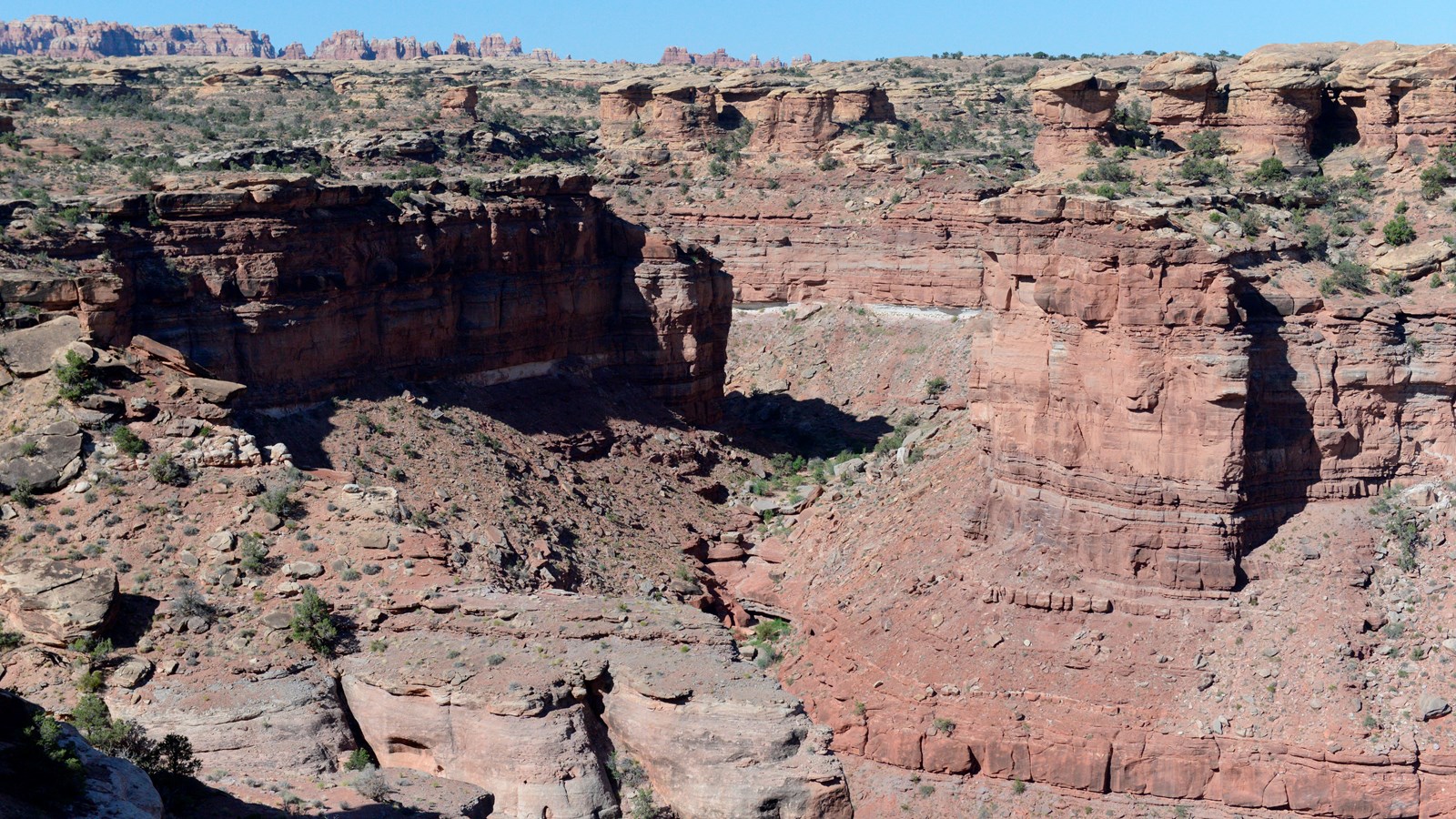Last updated: June 24, 2025
Place
Slickrock: Big Spring Canyon

NPS/Isabel Gonzalez
A Monumental Change
This is an unprotected overlook. Use extreme caution near cliff edges.
Welcome to the fourth viewpoint of the Slickrock trail. Here the landscape cuts deep revealing older layers of the geologic timeline. Grand View Point (Island in the Sky) and Junction Butte, rising a thousand feet above Big Spring Canyon, are visible to the north. These landscapes show erosional patterns typical of sedimentary rock. These various layers exhibit different degrees of resistance to weathering. Softer rocks, such as shales and mudstones, crumble into slopes. Sandstones, limestones, and other harder rocks maintain vertical blufs. The massive Wingate cliffs, the most prominent layer, were once enormous sand dunes.
The Canyonlands region remained near sea level during the time these rock layers were deposited. Change came when massive forces within the earth pushed these layers upward, forming the Monument Uplie and cuasing the rock layers to fracture. Cracks and joints weakened the rocks, esposing them to erosion from water and wind. Given time, these forces molded the rocks into the spires and mushroom shapes of The Needles.
